The Importance of Using a Priority Scale in Daily Life
Priority scale is a powerful tool that revolutionizes how we approach task management and decision-making.
A priority scale is a systematic method of ranking tasks based on their importance, urgency, and impact.
By implementing a well-structured priority scale, individuals and teams can optimize their workflow, allocate resources more efficiently, and ensure that critical tasks receive the attention they deserve.
Key Highlights
- Define and implement effective ranking systems
- Identify critical tasks and assess their impact
- Explore various prioritization methods including RICE framework
- Align priorities with organizational goals and agile methodologies
- Enhance productivity through improved time and resource management
- Apply priority scales across different project management contexts
- Overcome common challenges in priority scale implementation
Introduction to Priority Scale
In the project management and productivity, understanding how to prioritize tasks effectively is crucial.
Let’s dive into the concept of priority scales and explore how they can revolutionize your approach to task management.
Defining a Priority Scale and Ranking Systems
A priority scale is a systematic method of categorizing tasks based on their importance and urgency.
It’s essentially a ranking system that helps you determine which tasks need immediate attention and which can wait.
By assigning a priority level to each task, you create a clear roadmap for tackling your workload efficiently.
For example, a simple priority scale might use numbers from 1 to 5, where 1 represents the highest priority tasks and 5 represents the lowest.
Alternatively, you could use labels like “urgent“, “important“, “medium priority“, and “low priority“.
The key is to choose a system that makes sense for your specific needs and workflow.
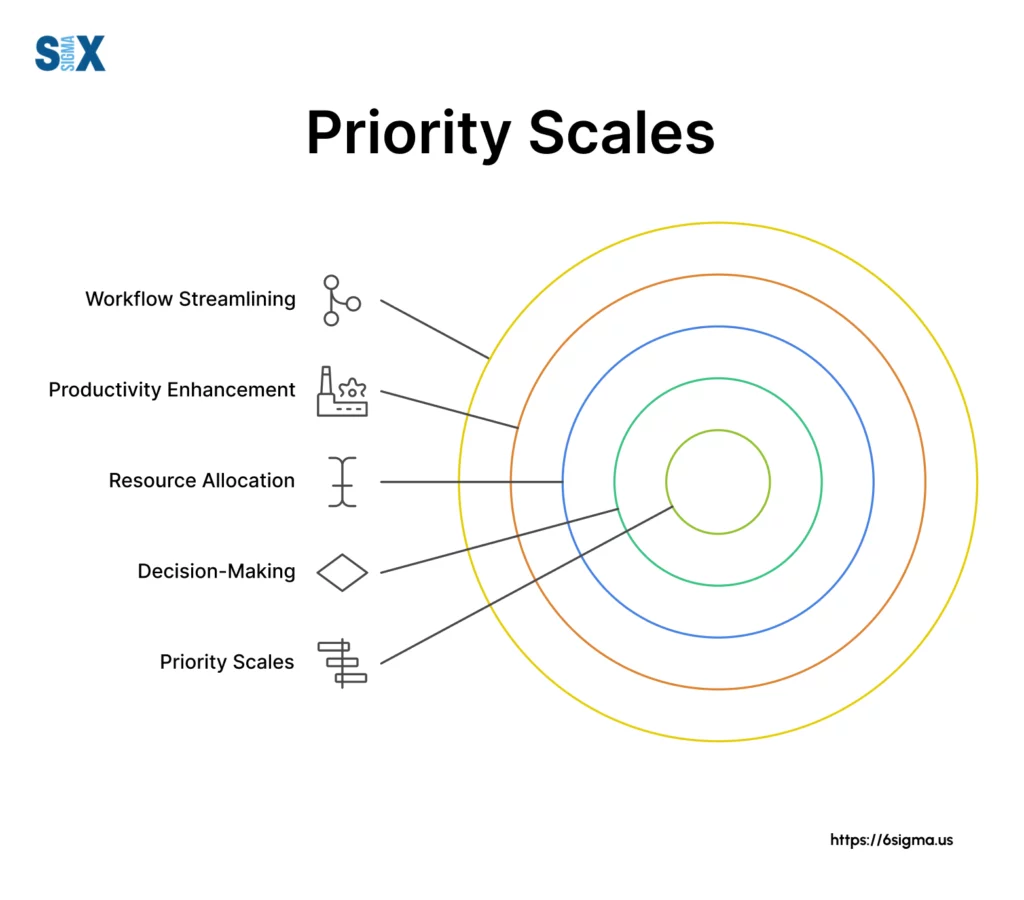
Importance of Task Prioritization in Project Management
In project management, task prioritization is not just helpful—it’s essential.
Without a clear system for prioritizing tasks, teams can quickly become overwhelmed, leading to missed deadlines, wasted resources, and ultimately, project failure.
By implementing a priority scale, project managers can ensure that their teams are always focused on the most critical tasks.
This helps to maintain momentum, meet important milestones, and keep stakeholders satisfied.
Moreover, effective prioritization allows for better resource allocation, reducing the risk of burnout and improving overall team productivity.
Components of an Effective Priority Scale
Now that we understand the basics of priority scales, let’s know the key elements that make up an effective prioritization system.
These components work together to create a robust framework for managing tasks and projects.
Identifying Priorities and Critical Tasks with a Priority Scale
The first step in creating an effective priority scale is identifying which tasks are truly important.
This involves analyzing each task’s potential impact on your project or organization’s goals.
Learning methodologies like Six Sigma can provide structured approaches to this analysis, and pursuing a certification in six sigma can deepen your understanding of these techniques.
Ask yourself: “What would happen if this task wasn’t completed?” or “How does this task contribute to our overall objectives?“
Critical tasks are those that have a significant impact on project success or pose substantial risks if not completed.
These should always be given high priority.
Remember, not everything can be a top priority—the key is to be discerning and realistic about what truly matters.
Implementing a Ranking System for Importance Levels
Once you’ve identified your priorities, you need a system to rank them. This is where your chosen priority scale comes into play.
Whether you’re using a numerical system, color-coding, or descriptive labels, consistency is key.
For instance, you might use a 1-5 scale where:
1 = Critical (must be done immediately)
2 = High importance (should be done soon)
3 = Medium importance (needs to be done)
4 = Low importance (nice to have)
5 = Optional (can be deferred)
Ensure that everyone on your team understands and uses the ranking system consistently to avoid confusion.
Assessing Urgency and Impact with a Priority Scale
Urgency and impact are two crucial factors in determining a task’s priority.
Urgency refers to how soon a task needs to be completed, while impact refers to the effect the task will have on your project or organization.
A useful tool for assessing both urgency and impact is the Eisenhower Matrix, which categorizes tasks into four quadrants:
- Urgent and Important: Do these tasks immediately
- Important but Not Urgent: Schedule these tasks
- Urgent but Not Important: Delegate these tasks if possible
- Neither Urgent nor Important: Eliminate these tasks if possible
By considering both urgency and impact, you can create a more nuanced and effective priority scale.
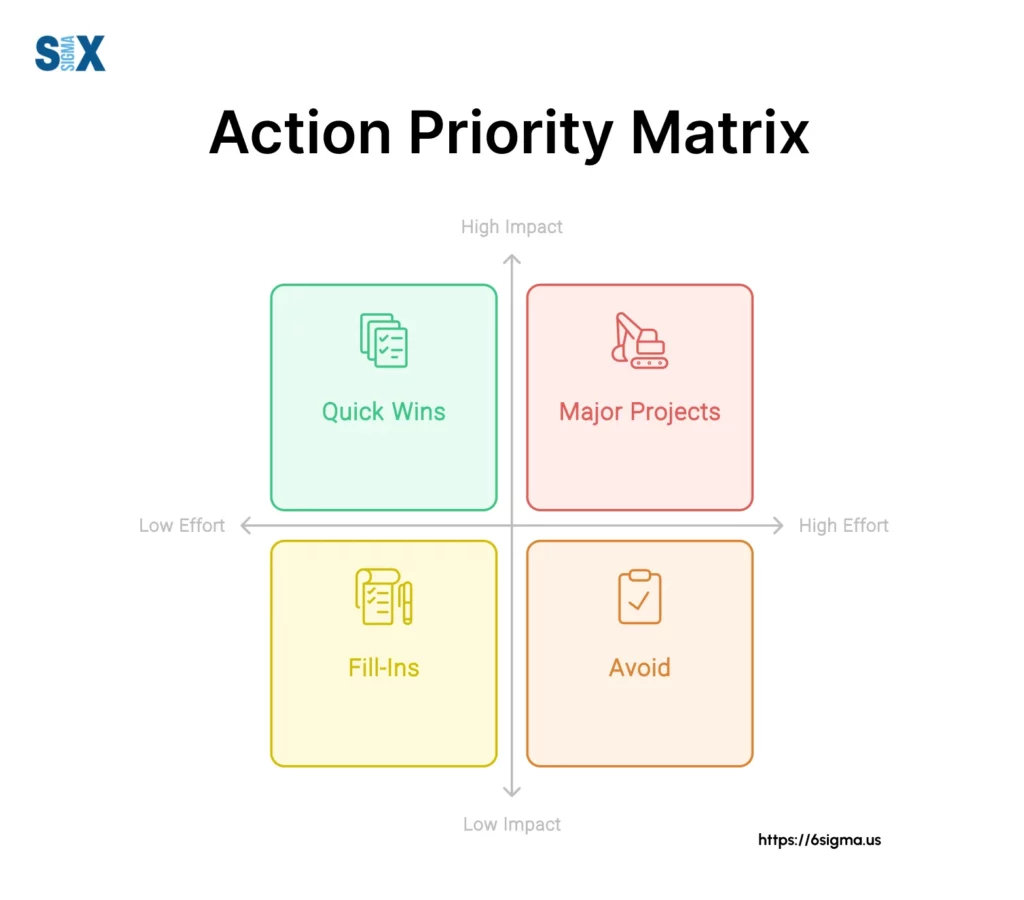
Types of Priority Scales
Priority scales come in various forms, each suited to different project management styles and organizational needs.
For teams using quality management systems, integrating Six Sigma principles can enhance impact-based prioritization.
Let’s explore some of the most common and effective types of priority scales.
Time-Based Prioritization Scales
Time-based prioritization scales focus on deadlines and the urgency of tasks.
These scales are particularly useful in fast-paced environments where meeting deadlines is crucial. Tasks are ranked based on how soon they need to be completed.
For example, a time-based scale might look like this:
- Immediate (within 24 hours)
- Short-term (within a week)
- Medium-term (within a month)
- Long-term (within a quarter)
- Future (beyond the current quarter)
This type of scale helps teams stay focused on impending deadlines and manage their time effectively.
Impact-Based Prioritization Scales
Impact-based scales prioritize tasks based on their potential effect on the project or organization.
This approach is valuable when you need to focus on tasks that will drive the most significant results.
An impact-based scale might categorize tasks as:
- Critical Impact (vital for project success)
- High Impact (significant contribution to goals)
- Medium Impact (notable but not crucial)
- Low Impact (minimal effect on outcomes)
By using an impact-based scale, you ensure that your efforts are always aligned with your most important objectives.
The Must-Should-May-Don’t Scale
The Must-Should-May-Don’t scale is a simple yet effective prioritization method.
It categorizes tasks into four clear levels:
- Must: Essential tasks that cannot be overlooked
- Should: Important tasks that should be done if possible
- May: Optional tasks that can be done if time allows
- Don’t: Tasks that should be eliminated or postponed indefinitely
This scale is particularly useful for quick decision-making and helps teams focus on what’s truly important while identifying tasks that can be deprioritized.
RICE Prioritization Framework
The RICE framework is a more complex prioritization method that considers multiple factors. RICE stands for:
- Reach: How many people will this impact?
- Impact: How much will it impact each person?
- Confidence: How confident are we in our estimates?
- Effort: How much time will it take?
By assigning scores to each of these factors and using a formula to calculate priority, the RICE framework provides a data-driven approach to prioritization.
For those interested in data-driven decision-making, our Six Sigma Green Belt Certification program offers comprehensive training in statistical analysis and process improvement techniques that complement such frameworks.
This method is particularly useful for product management and feature prioritization.
Get a detailed explanation of various priority scale methods with our Lean Six Sigma Green Belt Certification program.
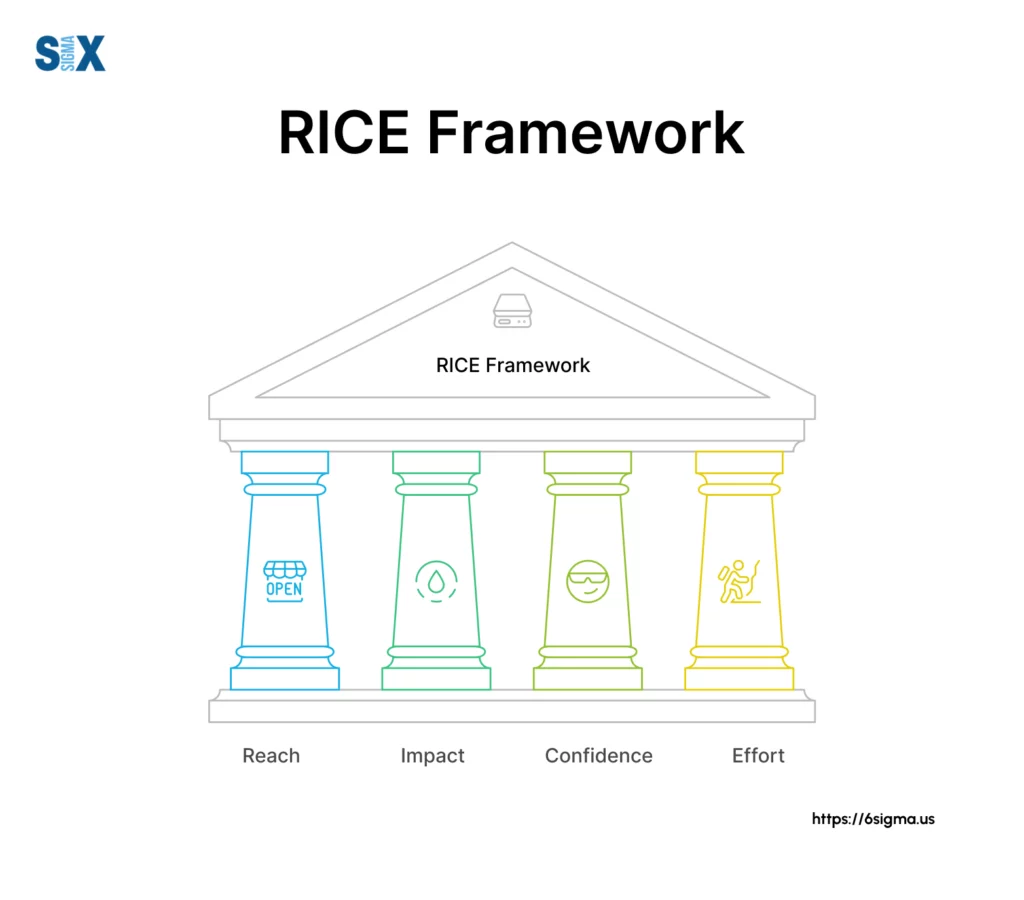
Creating and Implementing a Priority Scale
Now that we’ve explored various types of priority scales, let’s discuss how to create and implement one effectively in your organization.
This process involves careful planning and alignment with your team’s goals and methodologies.
Aligning Priorities with Organizational Goals
The first step in creating an effective priority scale is ensuring that it aligns with your organization’s overall objectives.
This means understanding your company’s mission, vision, and strategic goals, and then designing a prioritization system that supports these aims.
Our Six Sigma certification programs emphasize this alignment, and a can equip you with the tools to ensure your priorities are strategically sound.
For example, if your organization’s primary goal is to increase customer satisfaction, your priority scale should give higher weight to tasks that directly impact the customer experience.
This alignment ensures that every prioritized task contributes to the bigger picture.
Establishing Criteria for Task Categorization with a Priority Scale
Clear criteria for categorizing tasks are essential for consistent prioritization.
These criteria should be specific, measurable, and relevant to your organization’s needs. Some factors to consider when establishing criteria include:
- Strategic importance
- Financial impact
- Customer impact
- Regulatory requirements
- Resource availability
- Time sensitivity
By defining these criteria upfront, you create a standardized approach to prioritization that reduces subjectivity and ensures everyone is on the same page.
Incorporating Priority Scales in Agile Methodology
For teams using Agile methodologies, integrating priority scales into your workflow is crucial.
In Agile, priorities can shift rapidly, making a flexible prioritization system essential.
One way to incorporate priority scales in Agile is by using them during sprint planning. As you build your product backlog, assign priority levels to each user story or task.
This helps the team focus on high-priority items first and adjust as needed throughout the sprint.
Another approach is to use priority scales in conjunction with story points.
While story points estimate effort, priority levels can help determine which high-effort tasks are truly worth tackling first.
Adapting a Priority Scale for Product Backlog Management
In product management, the backlog can quickly become overwhelming without a proper prioritization system.
Adapting your priority scale for backlog management involves considering factors like:
- Business value
- User value
- Technical risk
- Dependencies
By applying your priority scale to your product backlog, you can ensure that your development team is always working on the most valuable features and improvements.
Consider using a tool that allows you to visualize your prioritized backlog, such as a Kanban board with priority lanes.
This can help your team quickly understand what needs to be worked on next.
Want to create your own priority scale? Effectively create and implement with agile methodologies with Lean Six Sigma Black Belt
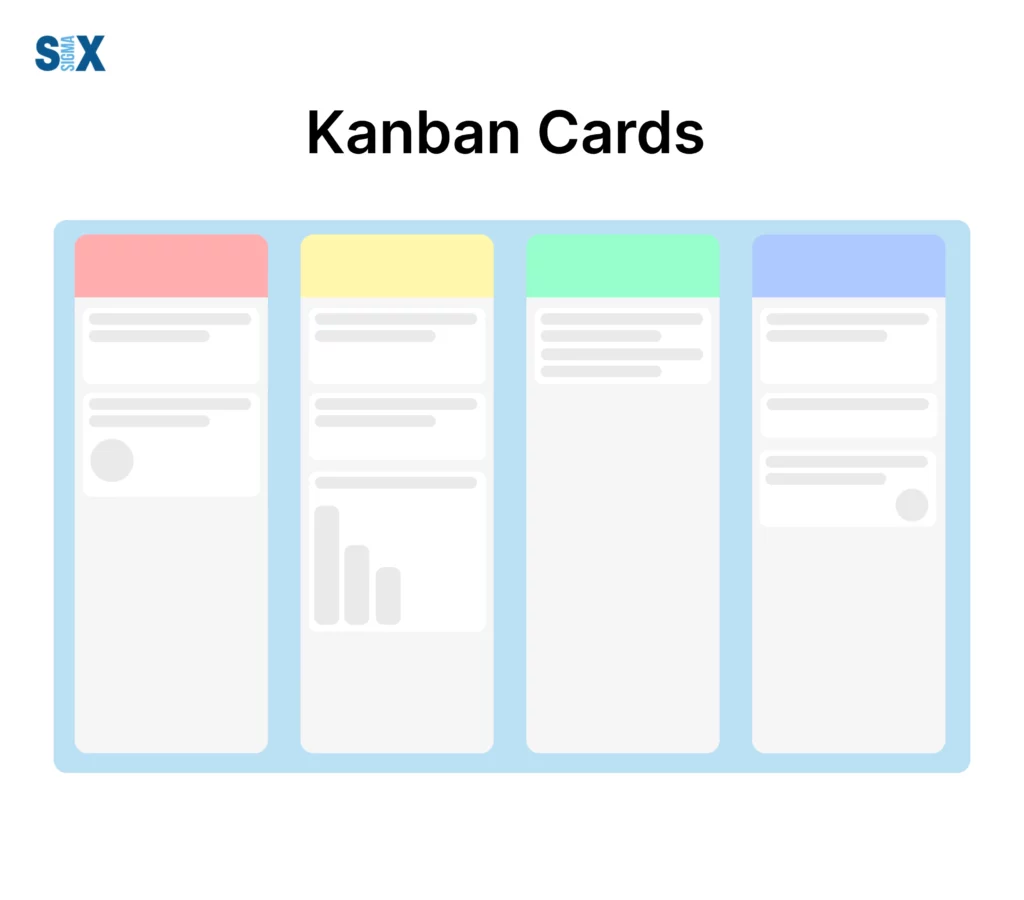
Benefits of Using a Priority Scale
Implementing a priority scale in your workflow can bring numerous advantages to your team and organization.
Let’s explore some of the key benefits that make priority scales an essential tool for effective management.
Improving Time Management and Workflow Optimization
One of the primary benefits of using a priority scale is the significant improvement in time management.
By clearly defining which tasks are most important, teams can focus their efforts where they matter most. This leads to more efficient use of time and resources.
Optimizing Resource Allocation with Priority Scale
Resource allocation is a critical aspect of project management, and priority scales play a crucial role in this process.
By knowing which tasks are high-priority, managers can assign their best resources to the most important work.
This ensures that critical tasks receive the attention they deserve and are completed to a high standard.
Enhancing Strategic Planning and Goal Alignment
Priority scales are not just tactical tools; they also contribute to strategic planning.
By forcing teams to think critically about the importance of each task, priority scales encourage a more strategic approach to work.
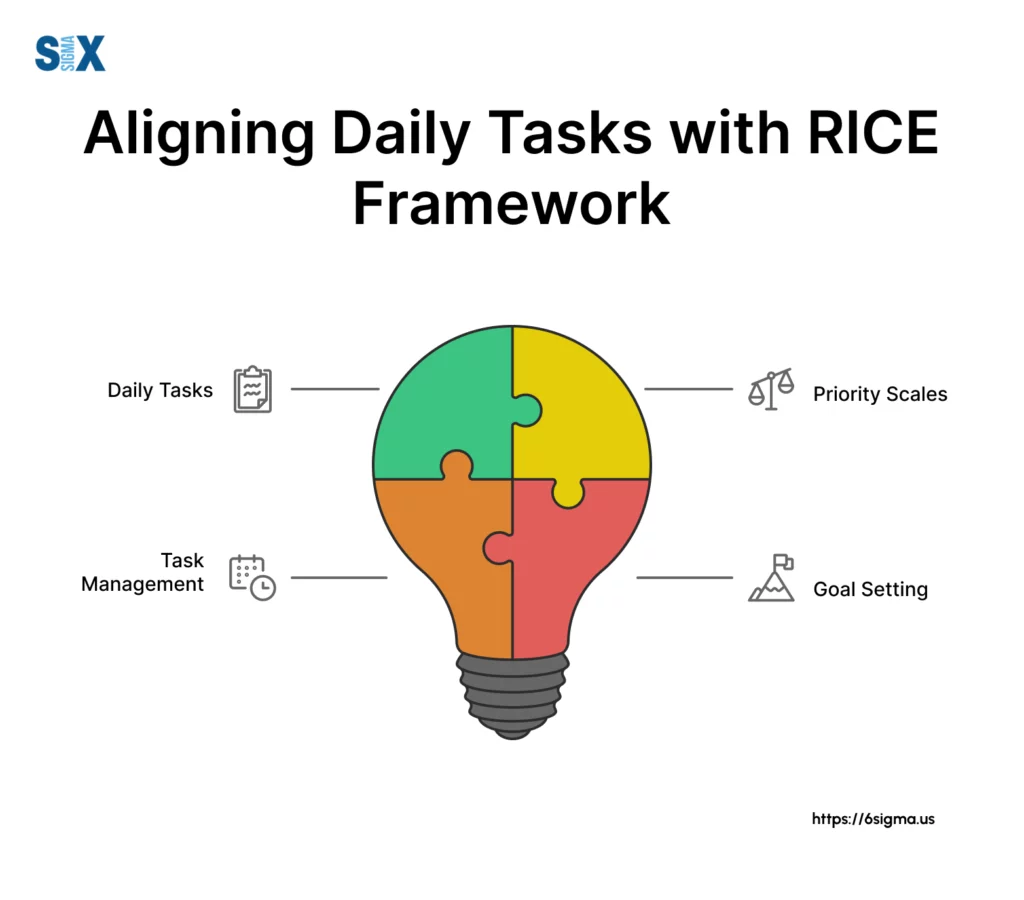
Priority Scale in Various Contexts
While we’ve primarily discussed priority scales in the context of project management, their applications extend far beyond this field.
Priority Scale in Project Management
In project management, priority scales are invaluable for keeping complex projects on track. They help project managers:
- Identify critical path tasks
- Manage stakeholder expectations
- Allocate resources effectively
- Handle unexpected issues and changes
For instance, when faced with conflicting deadlines, a project manager can use the priority scale to decide which tasks to focus on first, ensuring that the most crucial elements of the project are completed on time.
Utilizing Priority Scales for Feature Prioritization
In product development, feature prioritization is a constant challenge. Priority scales can help product managers make informed decisions about which features to develop next.
By considering factors like user demand, strategic alignment, and development effort, teams can create a prioritized feature roadmap.
This approach ensures that development efforts are always focused on delivering the most value to users and the business.
It also helps in communicating plans to stakeholders, as you can clearly show why certain features are being developed before others.
Implementing Priority Matrices in Sprint Planning
For Agile teams, priority matrices can be particularly useful during sprint planning.
A priority matrix combines urgency and importance to create a visual representation of task priorities. This can help teams:
- Select the right user stories for each sprint
- Balance between high-priority and quick-win tasks
- Ensure a mix of different types of work in each sprint
By using a priority matrix, Agile teams can make more informed decisions about what to include in each sprint, leading to more balanced and effective sprints.
Common Challenges and Best Practices
While priority scales offer numerous benefits, implementing them effectively can come with challenges.
Addressing Resistance to Change in Organizational Skills
One of the most common challenges when implementing a priority scale is resistance to change.
Six Sigma practitioners are trained in change management techniques to overcome such resistance. Consider exploring in our Six Sigma Certification programs to develop and enhance these skills.
Many team members may be set in their ways and reluctant to adopt a new system.
To overcome this:
- Clearly communicate the benefits of the priority scale to all team members
- Provide thorough training on how to use the new system
- Start with a pilot program to demonstrate effectiveness
- Encourage feedback and be open to adjustments
- Lead by example, with management consistently using the priority scale
Remember, change takes time.
Be patient and persistent in your efforts to integrate the priority scale into your organizational culture.
Maintaining Consistency in Workload Management with a Priority Scale
Another challenge is maintaining consistency in how the priority scale is applied across different teams or projects.
Inconsistent use can lead to confusion and reduce the effectiveness of the system. To ensure consistency:
- Develop clear guidelines for using the priority scale
- Create a reference document that all team members can easily access
- Regularly review and discuss prioritization decisions as a team
- Use project management software that incorporates your priority scale
- Conduct periodic audits to ensure the scale is being used correctly
Consistency is key to reaping the full benefits of a priority scale in workload management.
Regularly Reviewing and Updating Priority Assessments
Priorities can change rapidly, especially in dynamic business environments. Failing to update your priority assessments can lead to working on outdated priorities.
To keep your priority scale relevant:
- Schedule regular priority review meetings
- Encourage team members to flag when they believe priorities need to shift
- Be prepared to reprioritize tasks in response to new information or changing circumstances
- Use agile methodologies that inherently include regular priority reassessments
- Implement a system for quickly communicating priority changes to the entire team
By keeping your priority assessments up-to-date, you ensure that your team is always working on what’s most important right now.
Learn how to address challenges in priority scale implementation with our Root Cause Analysis
Conclusion
As we wrap up our comprehensive exploration of priority scales, it’s clear that these tools are invaluable for enhancing productivity and decision-making in various contexts.
Recap of Key Benefits and Applications
Throughout this article, we’ve seen how priority scales can:
- Improve time management and workflow optimization
- Enhance resource allocation efficiency
- Align daily tasks with strategic goals
- Facilitate better decision-making in project management
- Aid in feature prioritization for product development
- Support effective sprint planning in Agile methodologies
These benefits make priority scales a powerful tool for individuals, teams, and organizations looking to boost their productivity and achieve their goals more effectively.
If you haven’t already incorporated priority scales into your workflow, now is the time to start.
Those looking to formalize their expertise can explore our Six Sigma certification programs, which cover advanced prioritization and process optimization techniques.
Begin by choosing a priority scale that fits your needs—whether it’s a simple Must-Should-May-Don’t scale or a more complex RICE framework.
Then, gradually introduce it into your work processes, starting with personal task management and expanding to team-wide implementation.
Remember, the key to success with priority scales is consistency and regular review. Be patient as you and your team adapt to the new system, and be open to refining your approach based on feedback and results.
By embracing priority scales, you’re taking a significant step towards more efficient, focused, and productive work.
You’ll likely find that not only does your productivity improve, but you also gain a clearer sense of purpose and direction in your tasks.
So, take the plunge and start prioritizing with purpose. Your future, more productive self will thank you for it!
SixSigma.us offers both Live Virtual classes as well as Online Self-Paced training. Most option includes access to the same great Master Black Belt instructors that teach our World Class in-person sessions. Sign-up today!
Virtual Classroom Training Programs Self-Paced Online Training Programs






